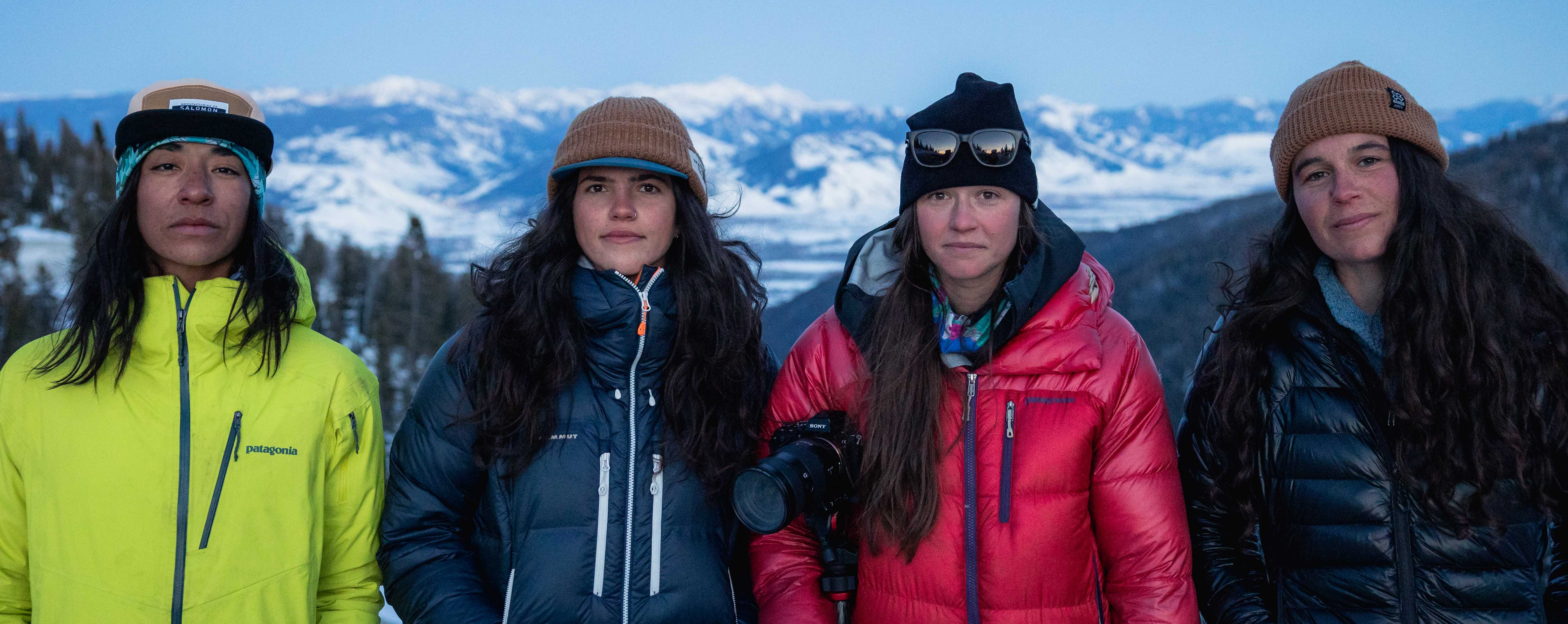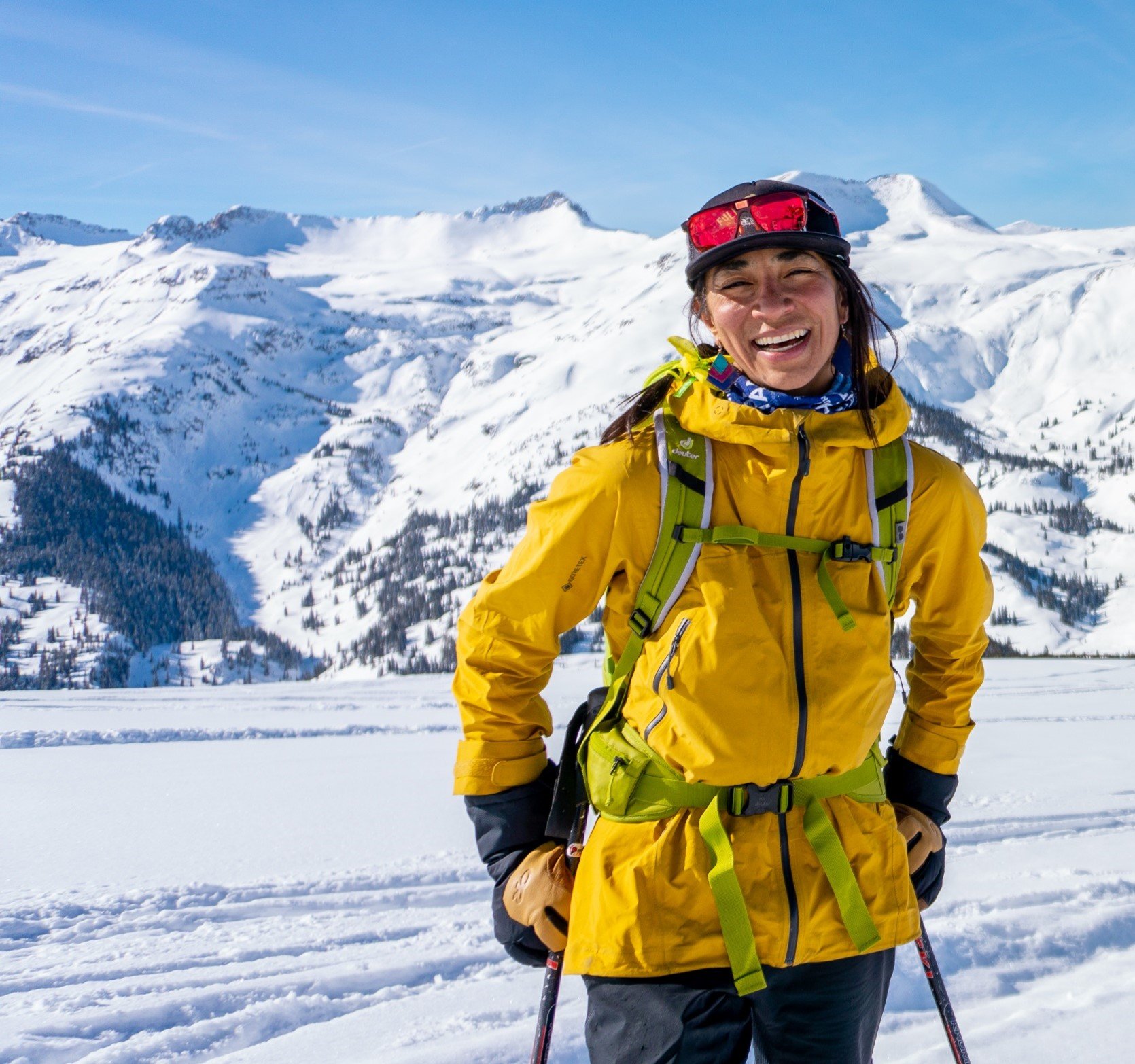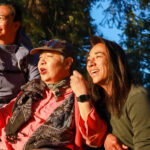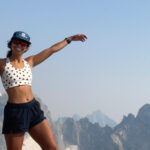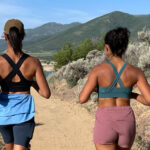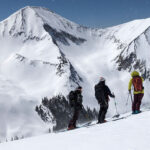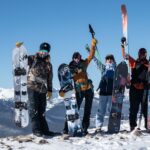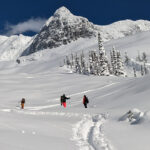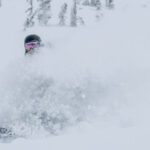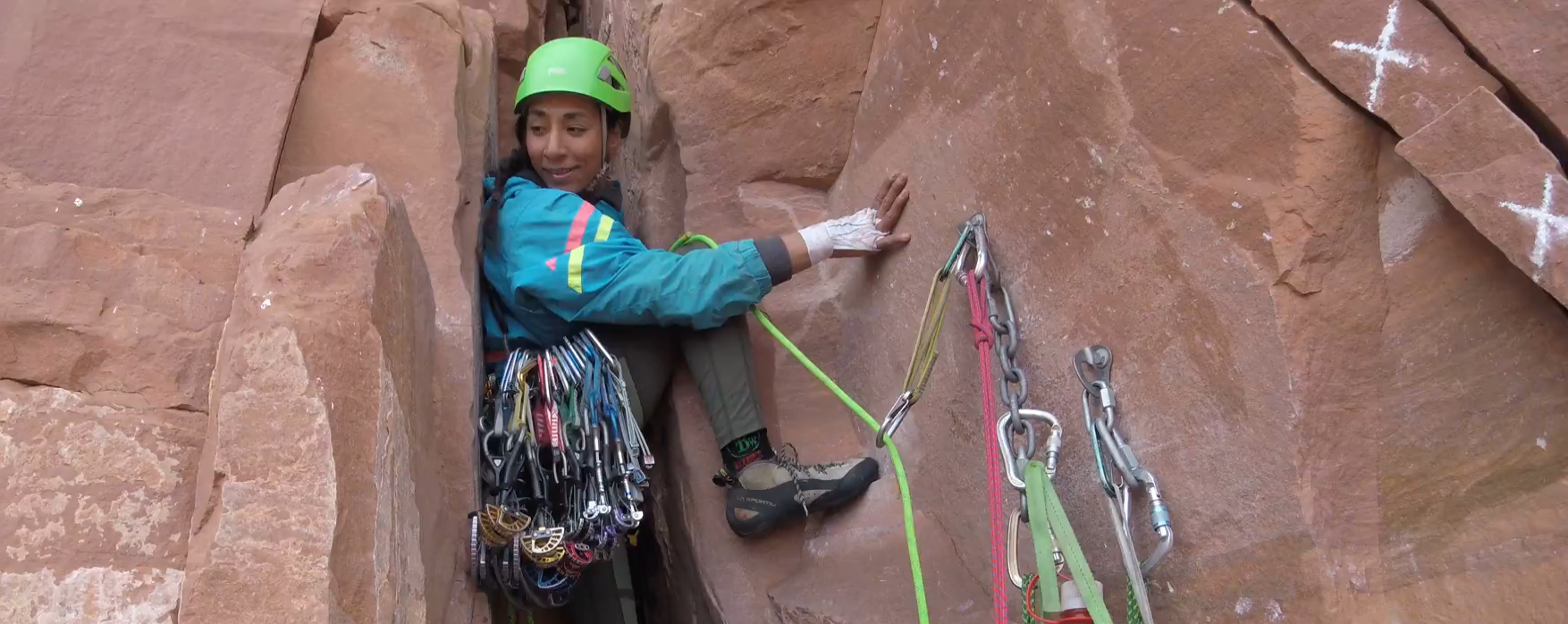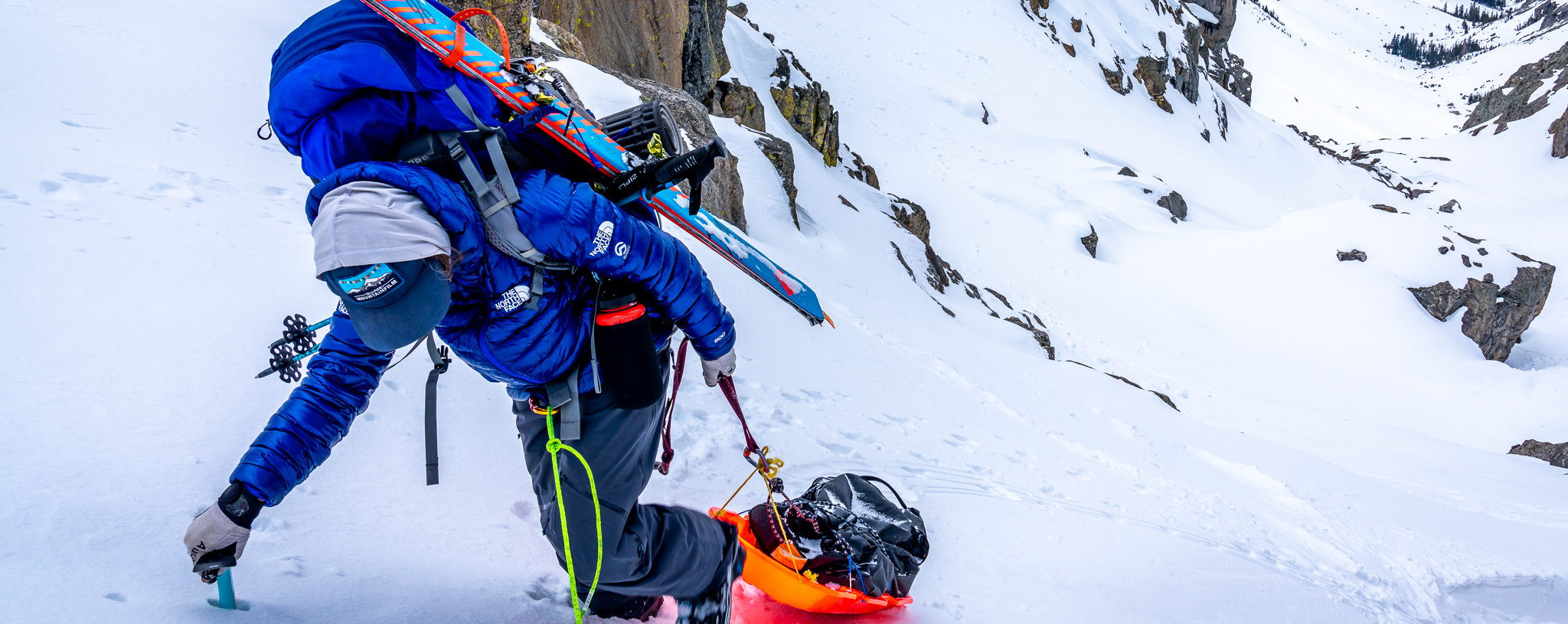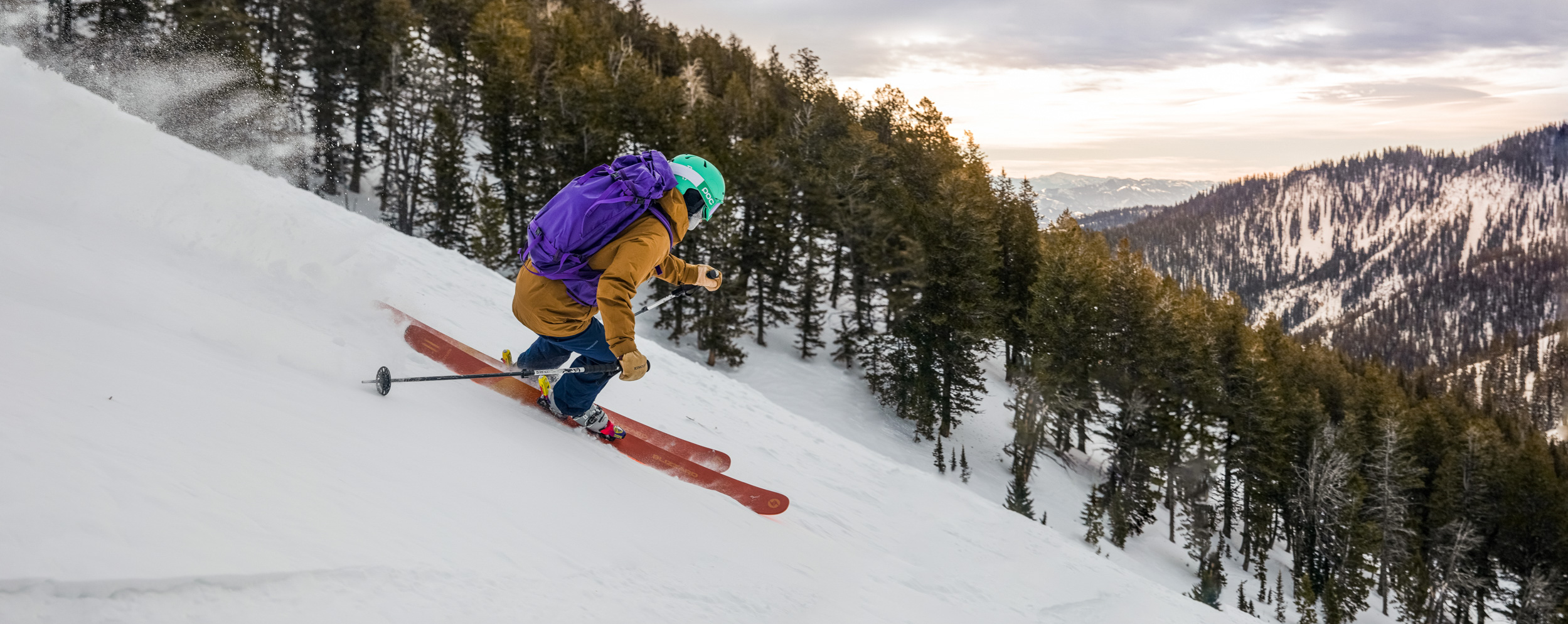Women in the Backcountry, Part 4: The Future of Women in the Backcountry
Take The Journey
Bleating loudly in the pre-dawn light, my phone’s alarm rousted me from bed. As my cold nose snarfled out of my sleeping bag, I took in the deep whiff of Cascade pines to glimpse the night’s setting moon yawn behind the forested, craggy ridge.
Heart beating to the drum of an exciting day to come, I quickly roused to action. After firing up my old Ford e250, I let the engine warm, briefly. First, boil water for tea while taking five minutes for a mini-morning meditation. Then, tuck away the sleeping bag, slip on new ski socks for the day, and drive the van into Lassen National Park, home of Lassen Peak, the southernmost mountain of the volcanic Cascade Range.
As I drove up Highway 89 towards the hulking massif on the lands of the Mountain Maidu people, I reflected on the reasons I was here. I was five years into my backcountry journey, and looked forward to the mountains I’d ski as much as friendships I’d form. Sunny blue skies overhead beckoned, and the future looked bright: I could only go up from here.
Define Your Personal Objectives
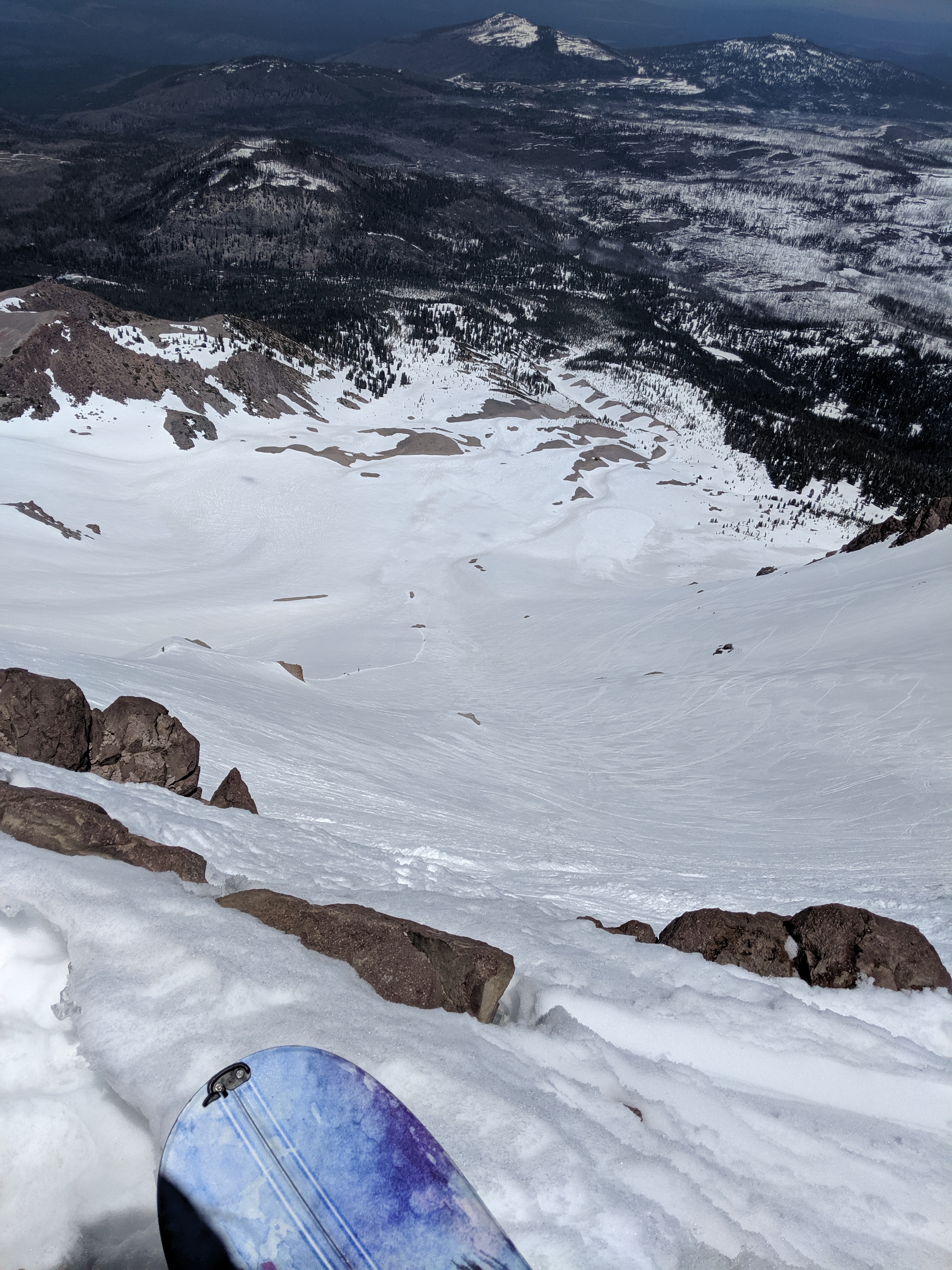
That day on Lassen, my objective was to have a beautiful day in the alpine, hopefully skiing the classic Northeast Face. And while I did ultimately ascend the 3,500 – 4,000 feet to romp around on the false summit before snowboarding my line with neither stops nor falls, it’s easy to overlook how I achieved my objective. Did I just buy the right gear, build years of experience and knowledge, or consult several maps and apps to achieve this summit? In reality, the price of entry for this experience was all of the above, and more.
No matter how experienced we are in the backcountry: we must identify our goals, and outline how we want to get there. In the mountains (and in life), goal-setting and objective identification gives us direction and defines a path to follow.
How to Set Objectives and Goals
- Plan long-term goals.
What do you want to achieve in the mountains, whether it’s over an individual season or over multiple years?
Goals should provide a general idea or approach of that which you seek to achieve.
Some examples of personal goals could include going on your first backcountry hut trip, skiing or snowboarding 500’ without falling, navigating a new zone with your friends, or summiting a local mountain. - Identify individual objectives to achieve along the way.
What are the individual building blocks you’ll need to assemble to get to your goal?
Objectives are always specific, measurable, and time-bound.
For example, objectives could include “learning how to read a topographic map by the end of the winter” or “developing competency with all my backcountry ski touring gear.”
If you are still learning how to ski or snowboard, select your goals and objectives using the learning framework that licensed instructors have developed. Skill progressions from the PSIA-AASI (Professional Ski Instructors of America and American Association of Snowboard Instructors)-certified instructors can help you learn key skills that will to move through whatever conditions the mountains might present you.
If you are very new to skiing, for example, aspire to link turns, ski in control, and navigate off-piste terrain. Skiing downhill (aka “alpine skiing”) at a resort and/or skiing uphill (per your local resort’s ‘Uphill Policy’) will help you hone these skills for the varied conditions you will find in the backcountry. Get your reps at a resort to build your ski skills—and maximize your fun factor—before heading into the backcountry.
Pro Tip: If you’d like to build skills to prepare you for the backcountry, consider getting together a group of friends with similar skill levels and hiring an instructor at your local resort for a private lesson.
Even if you’re an experienced skier or splitboarder, hire a guide to craft a curriculum that meets you at your skill level, and supports the objectives you’ve set for yourself.
For more experienced backcountry skiers and splitboarders, developing relationships with local guide outfits and frequent ski partners opens the door to growth that can tremendously improve your skiing, snowboarding, and even rate of survival.
Embrace Personal Education
“There is no finish line,” says an ad from my former employer, Nike. The implication behind this running-inspired phrase refers to the growth mindset: we aren’t in a race until a finite end; we can always do, learn, and be more.
In the future, I hope to see more women digging into the many different ways to enrich their educational journey with both informal and formal opportunities for growth. Between time on the snow, in the classroom, digging snow pits, and listening to snow safety podcasts (see list here), backcountry education can really become our own. This, in a way, is about developing personal agency, the feeling of being in control of your life. When we believe in our capacity to influence our own thoughts and behavior and have faith in our abilities to handle a wide range of tasks or situations, we are unstoppable.
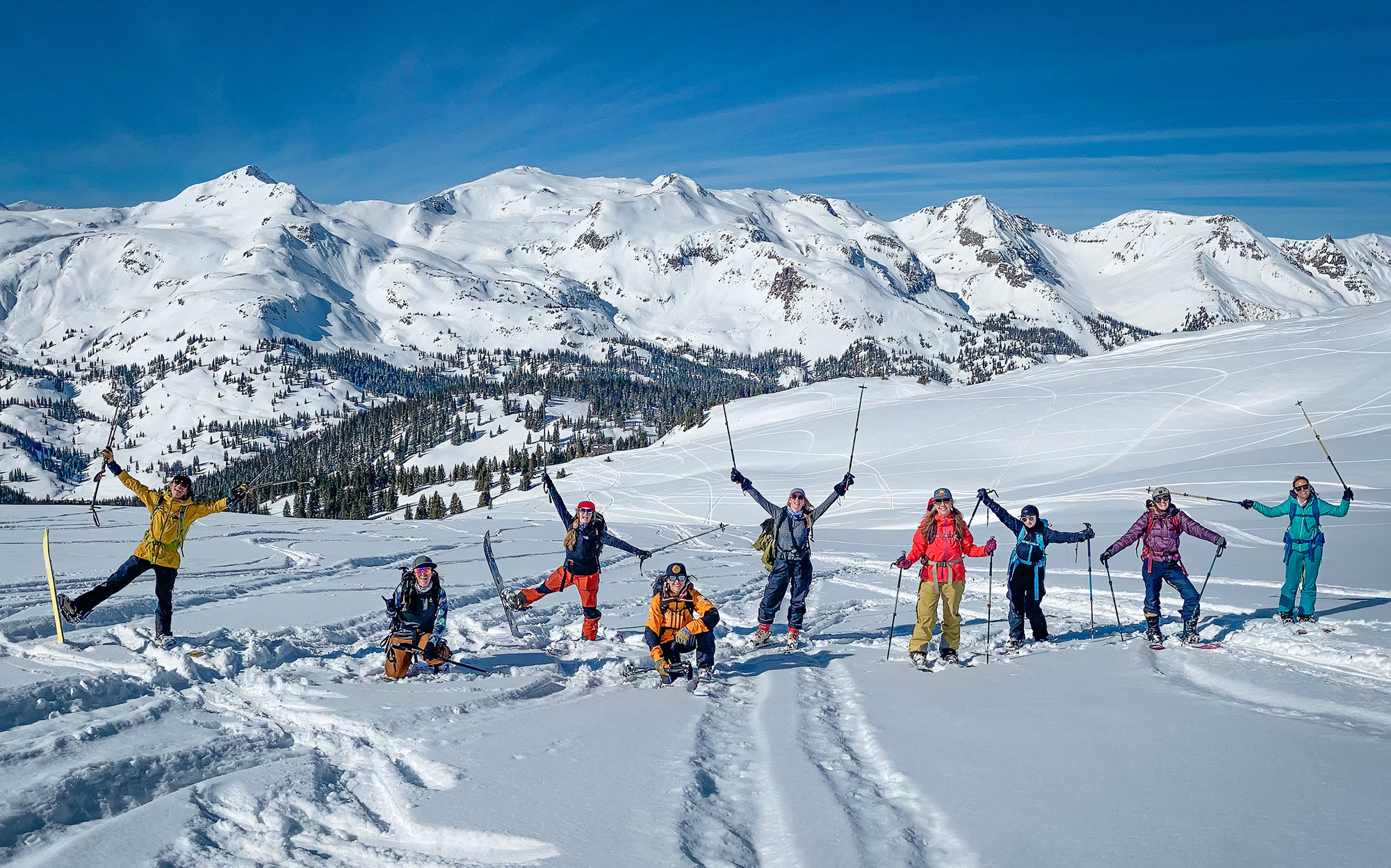
A force of nature (and big mountain skier) Sophia Schwartz shared one such custom learning opportunity in her quest to understand wind slabs recently. In collaboration with Sarah Carpenter of the Avalanche Institute (and several frequent ski partners), Schwartz embraced her identity as a “curious life-long learning mountain explorer who happens to love skiing powder, exposed terrain, and steep couloirs.” Her findings, seen here, beautifully balance the ever-shifting dynamics of human and environmental factors in the backcountry.
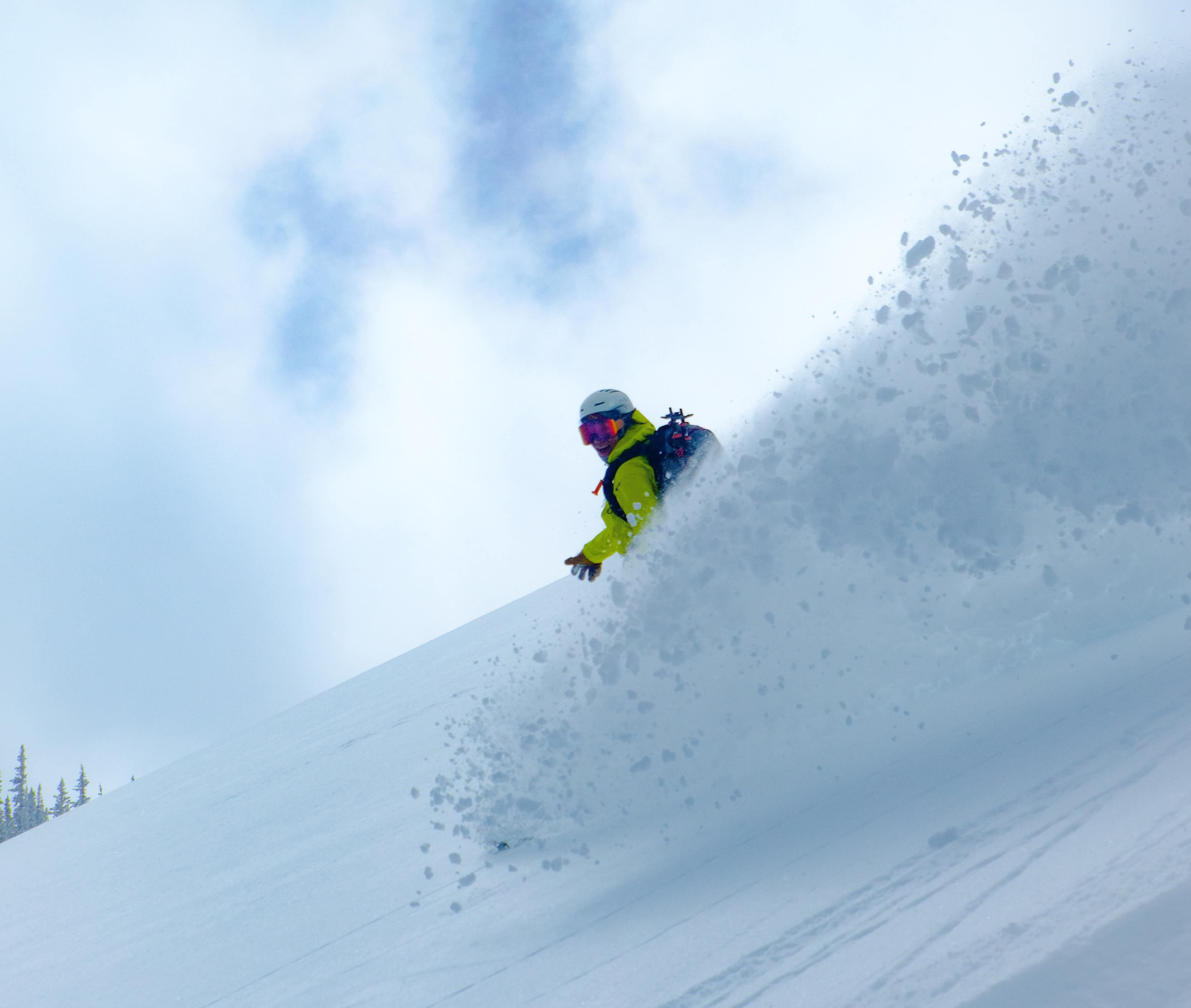
Personally, I’ve found education, in all its forms, to be the linchpin in my backcountry skiing journey. From understanding terrain and environmental factors to focusing on group dynamics and technical skill management, I constantly seek learning experiences to help me grow in the mountains. Remember: growth looks like leadership, too, and is a step we must take for ourselves.
As Stephanie Nitsch of Pallas Snowboards told Jackson Hole Snowboarder Magazine:
“Where I see fewer women is in lead roles within their own touring groups or community hubs—women tend to take more of a back seat to trip planning, decision-making, or even showing up to events. But the continued pursuit of backcountry education and riding more frequently are really valuable to equalizing the participation.”
“Where I see fewer women is in lead roles within their own touring groups or community hubs—women tend to take more of a back seat to trip planning, decision-making, or even showing up to events. But the continued pursuit of backcountry education and riding more frequently are really valuable to equalizing the participation.”
No matter where you are in your journey, remember: time on snow does wonders for improving your skill level. Much of the education you’ll get in a classroom and from books, podcasts, and digital learning resources makes much more sense when you’re on the snow.
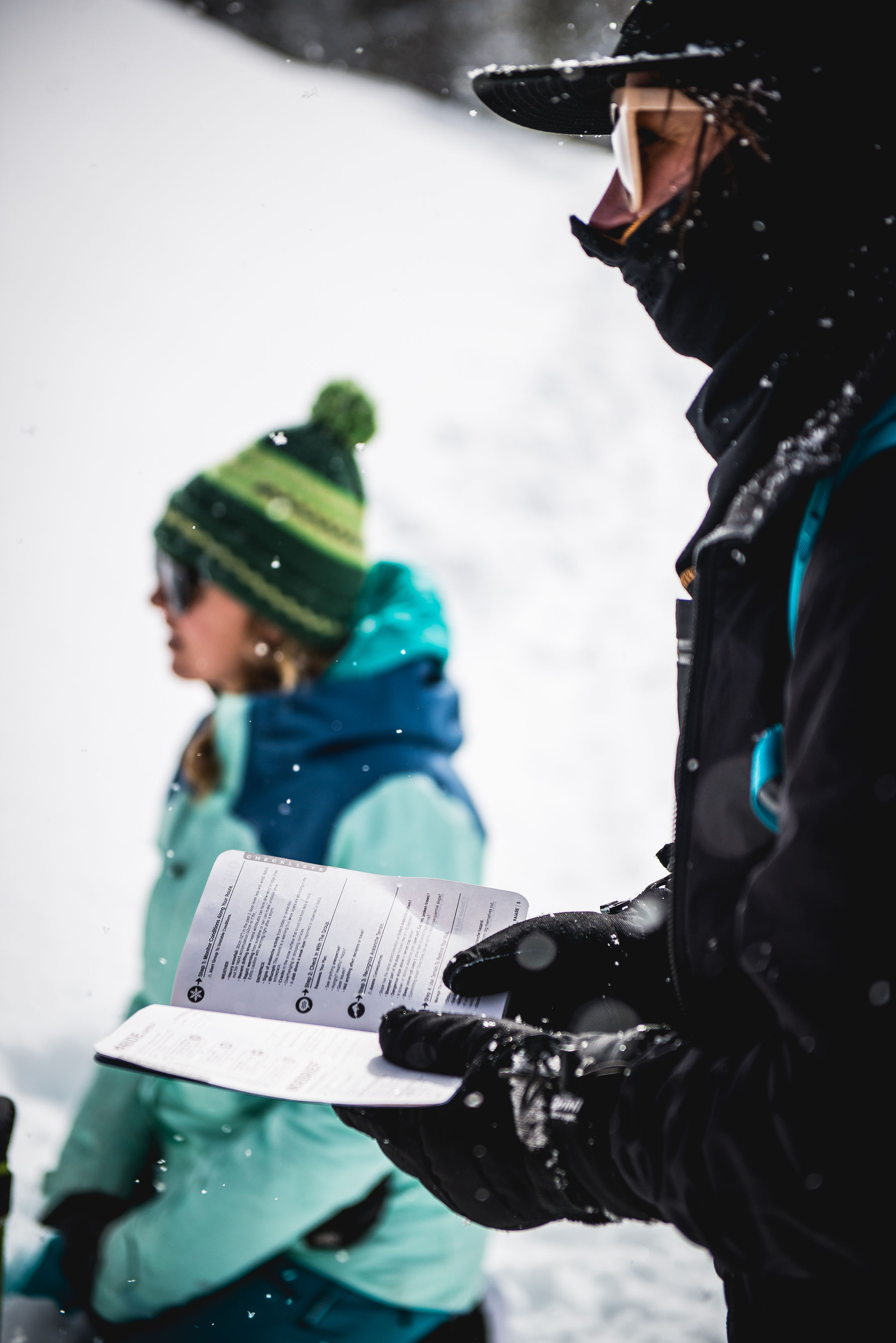
AIARE Level 1 students listen attentively to San Juan Expedition guide women. Photo by Siri Raitto for Weston Backcountry. Photo from Ute land. 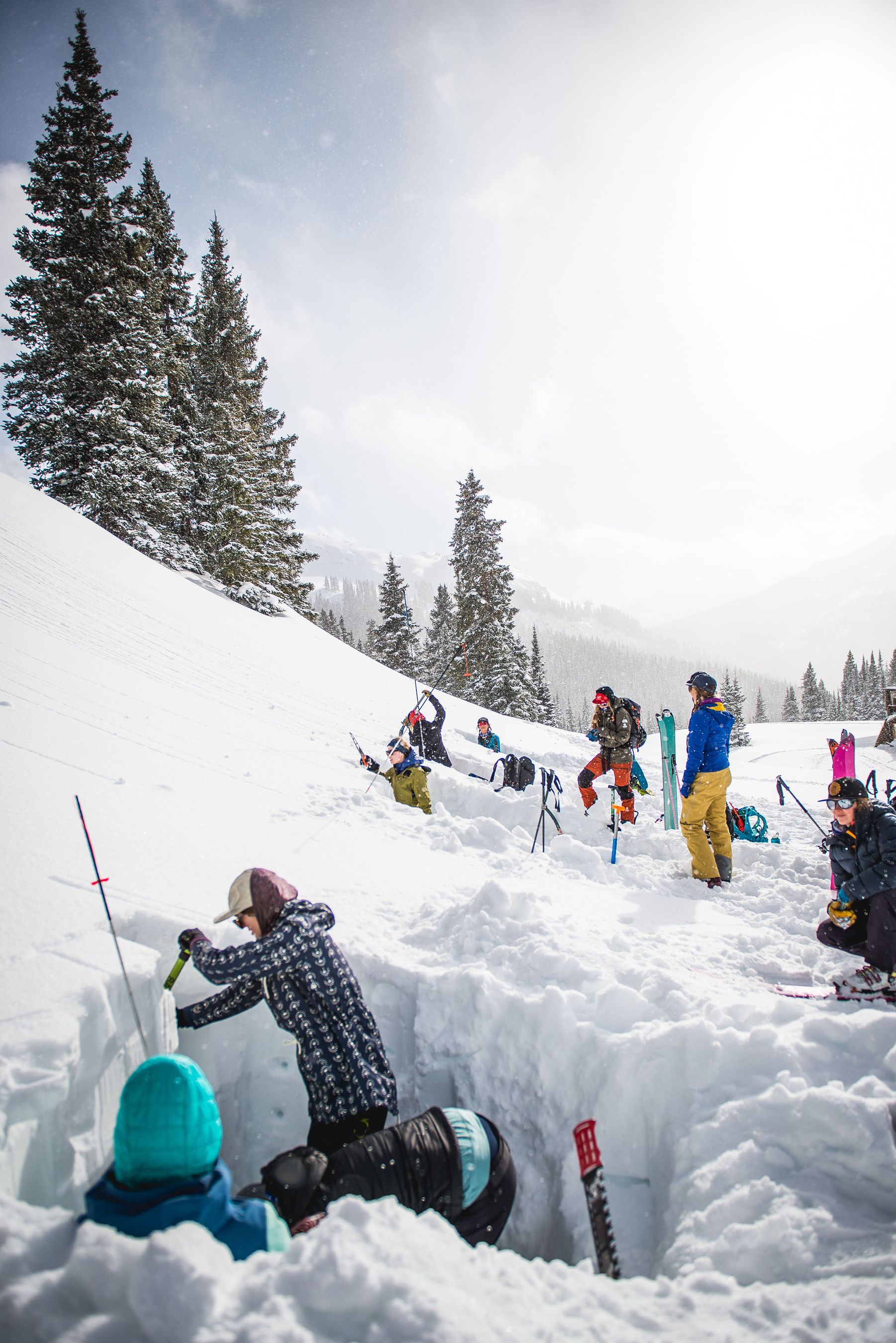
San Juan Expeditions students practice AIARE Recreation Level 1 skills while digging pits. Photo by Siri Raitto for Weston Backcountry. Photo from Ute land. 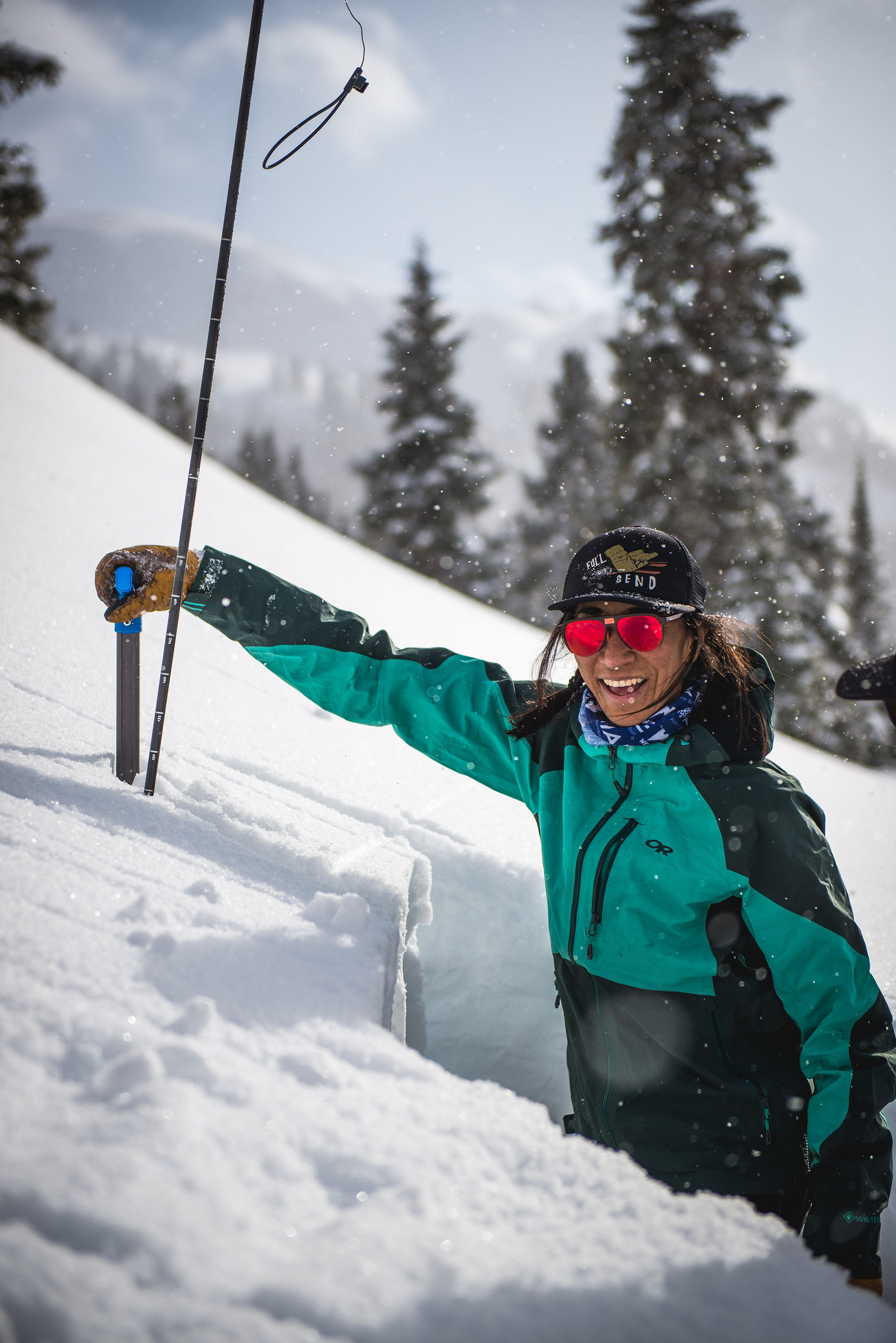
Equanimity Outdoors leader and professional athlete Dani Reyes-Acosta. Photo by Siri Raitto for Weston Backcountry. Photo from Ute land.
Build and Support Community
Representation matters in the media, but it also matters in person, and in our communities. The best way to show up for a supportive, women-friendly backcountry community? Show up, daily. Whether in person or online, strive to support other women in their mountain-minded journeys.
Betsy Manero, ski guide and Backcountry Magazine editor, wants “to see the women who are comfortably planted in the backcountry doing the work to invite others in, because someone had to do that for all of us—myself included—and we all owe the backcountry community a debt because of it.”
To create the world we want to see, we must acknowledge the historical marginalization and type-casting that all women—but especially Women of Color and trans women—face in their journey to thrive in the backcountry. Then, we must actively work to upset this system of marginalization. Betsy wants to “see white, cis gendered women like myself thinking about what we can do to be better allies.” Reflecting on her journey in the backcountry, plus what she’s seen for others, Betsy mused: “I had someone hold a door open for me, which made [all this] possible. It really only takes one person saying, “Yes, you belong here, and I’m going to invest my time and energy into making sure you feel comfortable here.”
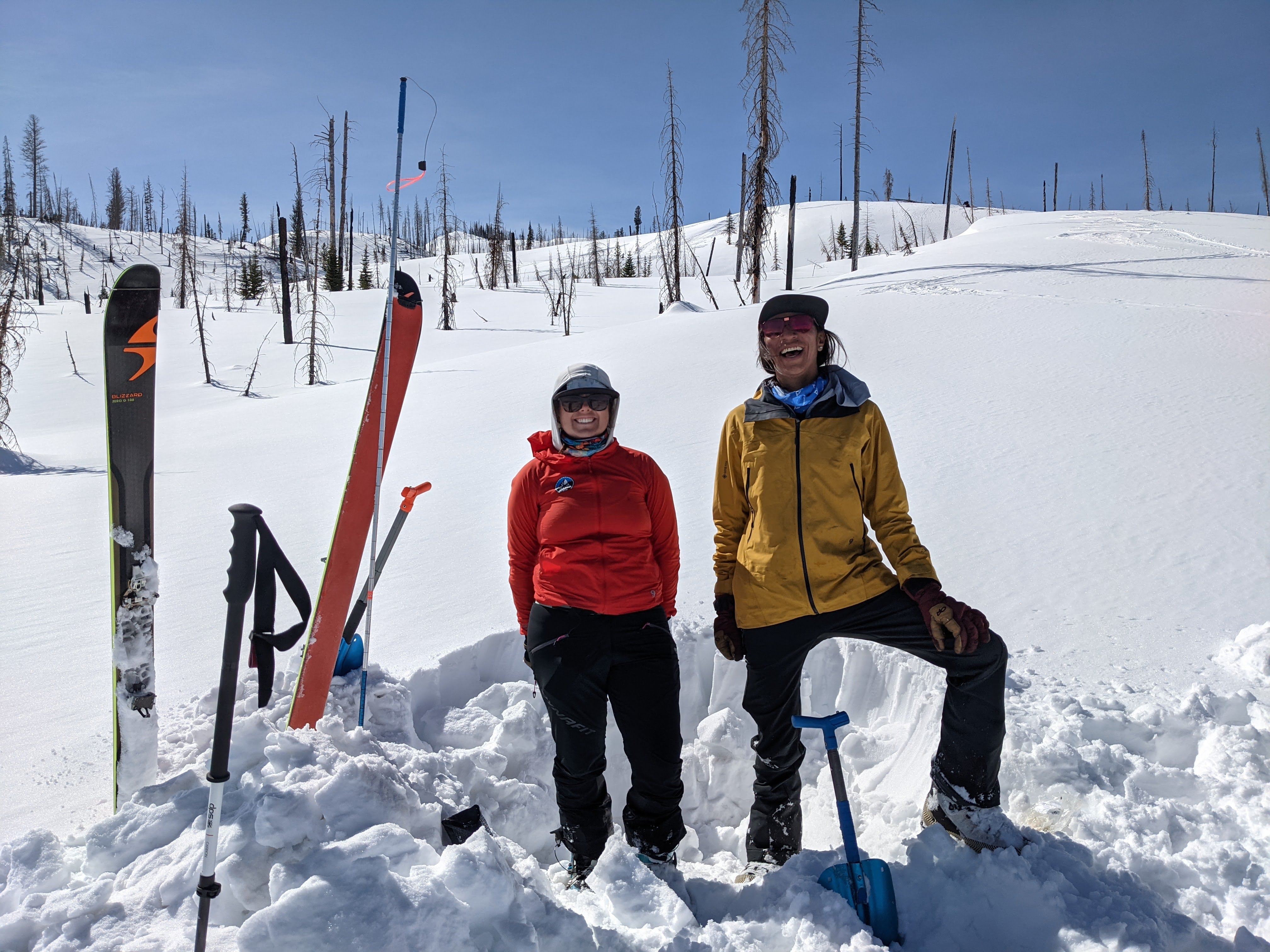
She challenges us: “how can women coming from some kind of privilege, either financial, racial or gender identity-wise, help our sisters who haven’t been given those privileges?
To equalize participation, level the playing field, and embrace a journey of learning requires a lifelong commitment to the full range of our human experience. While we might be able to choose joy and whimsy in the mountains, we’ll often be faced equally with challenges, failures, and setbacks.
Yet this journey, taking us both individually and collectively to a better, higher place, can teach us a lifetime of lessons, if we’re willing to listen. In the future, let’s join together to take hold of our destinies, as much as we can, in the mountains: define goals, embrace education, and build community, as much as possible, to grow in the mountains.
It is not the path we glide that makes a difference in our journey; it is the process we follow that determines the destination. Love the process, love life, and love the mountains.
That day on Lassen, as I stared down the gut of the 4000′ vertical feet I’d snowboard, a light breeze ruffled my Hawaiian shirt. Goosebumps prickled my skin as I pondered the moments of freedom I’d get to celebrate on this ride. Was I really going for it? Would I send this perfect, aesthetic line from the summit, all the way down?
Heck yes, I would. Enjoying the ride is the best part of the game. After all the work I’d put in, and the time I’d spent learning, the words of a backcountry sister no longer with us echoed in my mind:
You can do this. Together, we’ll send.
Jenny Shedden, Mountaineer, skier, rad human. 1985-2019
Read the full series of Women in the Backcountry:
Women in the Backcountry, Part 1
Women in the Backcountry, Part 2
Women in the Backcountry, Part 3
About the Gear Tester
Athlete and storyteller Dani Reyes-Acosta aims to inspire individual action and collective communion through self-care and self-determination found in the outdoors. After leaving cushy corporate life to find her way back to her roots, she ticked rock climbs and ski lines across Argentina, Chile, Canada, and the USA on a circuitous path to self-actualization. Find her online as @NotLostJustDiscovering or via DaniReyesAcosta.com

